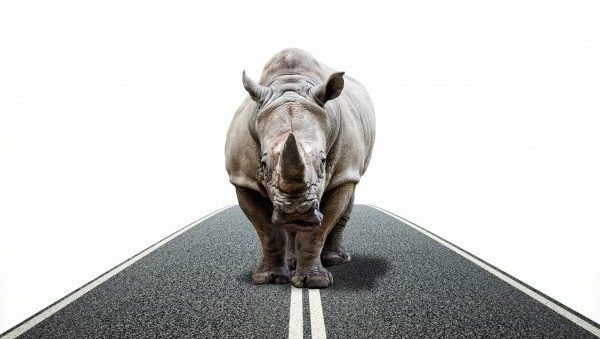Parte I e
parte II.
"Many investors lose sleep over "black swans" -- hard-to-predict events that cause chaos, like terror attacks or the bursting of the dot-com bubble.
Now authorities in China are being urged to watch for "gray rhinos" -- obvious dangers that are often ignored anyway."(daqui)
Nunca é se, é quando. Quando é que a maré muda.
A maré muda sempre.
"As exportações da indústria têxtil e do vestuário começam a tremer e fecharam o primeiro trimestre do ano a cair 0,9%, pressionadas pelo segmento do vestuário (-2%) e pelo desempenho negativo dos 4 maiores clientes da fileira: Espanha, França, Alemanha e Reino Unido, anunciou esta sexta-feira a ATP - AssociaçãoTêxtil e Vestuário de Portugal.
.
Depois de bater três recordes consecutivos na exportação, para fechar 2018 nos 5,3 mil milhões de euros (+2%), o sector entrou em 2019 já de forma cautelosa.
...
No seu conjunto, a fileira exportou 1,35 mil milhões de euros, menos 12 milhões de euros do que no ano anterior, e terminou o trimestre com um saldo positivo de 241 milhões de euros na balança comercial, o que se traduz numa taxa de cobertura de 122%.
...
Com uma quota de 29,7% nas exportações da fileira têxtil, Espanha continua, assim, a estar sob o "efeito Inditex", o grupo que reúne marcas como a Zara, Pull&Bear, Bershka ou Massimo Dutti, é o maior cliente das têxteis do Vale do Ave e tem estado a desviar compras que fazia habitualmente no país, especialmente as encomendas de valor mais baixo, para outros destinos, designadamente a Turquia e Marrocos."
E quando se escreve:
"No entanto, o esforço das empresas para diversificarem clientes e encontrarem alternativas à quebra de Espanha está a ter resultados positivos em dois destinos do top 10 do ranking das exportações do sector, com os Estados Unidos a protagonizarem a maior subida (+14,8% ou 11 milhões de euros)"
Há que ter cuidado, os Estados Unidos são
um mercado de preço:
"É que o mercado dos EUA "é um dos mais sensíveis em relação ao preço, mesmo em produtos de valor acrescentado"
Tempo para parar para pensar, tempo para reflectir no que cortar, tempo para reflectir no que focar, tempo para lançar novas sementes, tempo para testar novos caminhos.
É claro que há gente a sofrer com esta evolução, por isso, peço desculpa por recordar esta ironia:
Boas notícias, Portugal a ser abandonado pelo negócio do preço (1)




















